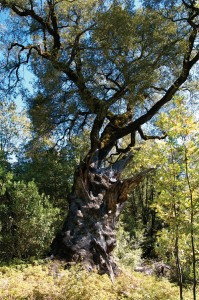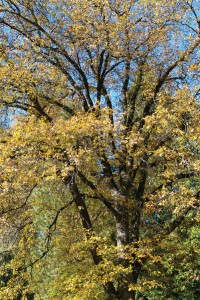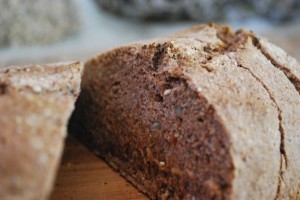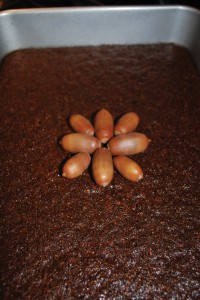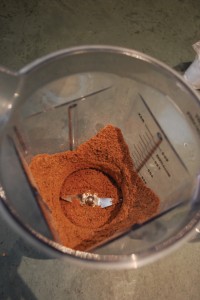Oak
OAK FAMILY
Canyon Live Oak Quercus chrysolepis
Blue Oak Quercus douglasii
Valley Oak Quercus lobata
Interior Live Oak syn. Sierra Live Oak Quercus wislizenii
Black Oak Quercus kelloggii
Valley Oak Quercus lobata
Canyon Live Oak Quercus chrysolepis
Brewer’s Oak Quercus garryana var. brewerii
Huckleberry Oak Quercus vaccinifolia
Scrub Oak Quercus berberidifolia
Leather Oak Quercus durata
Habitat & Elevation
Canyon Live Oak: moist hillsides and canyons 3,500′ – 6,500′
Blue Oak: dry hillsides below 3,000′
Valley Oak: formerly common in valleys below 3,000′
Interior Live Oak syn. Sierra Live Oak: dry hillsides and valleys 1,500′ – 4,000′
Black Oak: foothill slopes below 7,000′
Brewer’s Oak: 1,000′ – 5,000′
Huckleberry Oak: steep, subalpine forests 2,800′ – 8,500′
Scrub Oak: chaparral and foothill areas 1,000′ – 4,800′
Leather Oak: chaparral, foothills, woodlands 500′ – 4,800′
Collection Bark, Twig: all seasons; Nut: fall
NOTE Valley Oaks are an indicator of good soil since they typically grow in valleys that were stream and river flood plains. Development and dams have contributed to their decline. Hybrid species are fairly common. For example, a natural hydrid called ‘Oracle Oak’ grows in some areas where Interior Live Oak and Black Oak overlap.
Indigenous Names
Blue Oak Nisenan c’akom c’a
Black Oak Nisenan hamsum c’a; Mountain Maidu hamsim cham
Valley Oak Nisenan lom c’a; Konkow lo wy
![]()
Canyon Live Oak Quercus chrysolepis
Plant type Evergreen tree
Size 20′ – 60′
Light Full sun to partial shade
Water Drought tolerant
Zone 5 to 10
Native to shady canyons of the California foothills and desert mountains, Canyon Live Oak is an evergreen tree growing 20′ – 60′ tall and wide, with shrubbier forms at higher elevations. Its appearance varies widely, with 1″ – 2″ long leaves that are either pointed or oval, flat to curved downward at the edges, with either spiny or smooth edges. Bark is smooth and grayish-white when young, developing a darker, checked appearance with age. Canyon Live Oak performs well in the garden setting, being adaptable to a variety of conditions and serving as an excellent screen. Once established, no supplemental irrigation is necessary.[20]
Blue Oak Quercus douglasii
Plant type Deciduous tree
Size 30′ – 50’x40′ – 70′
Light Full sun
Water Drought tolerant
Zone 5 to 10
Blue Oak is commonly found in the California foothills and the Central Valley. It is a deciduous tree with a rounded form, developing gnarled branches with age. It usually grows to 30′ tall, although can reach up to 50′. Leaves are shallowly lobed, 1″ – 3″ long, and bluish-green, displaying fall colors of pink, orange and yellow.
Blue Oak is very drought tolerant, performs well in hot temperatures, and tolerates poor soil. Plant companions are California Buckeye Aesculus californica, Coffeeberry Rhamnus californica and Buckbrush Ceanothus cuneatus.
Black Oak Quercus kelloggii
Plant type Deciduous tree
Size 30′ – 50’x40′ – 70′
Light Full sun to partial shade
Water Drought tolerant
Zone 5 to 10
A beautiful tree with year-round interest, Black Oak grows to 50′ tall and 70′ wide, with a rounded crown and upright habit. Leaves are 2″ – 6″ long and deeply lobed. They emerge in the spring in pink, red, or pale green, and turn dark green and glossy in the summer. In the fall, leaves turn crimson, orange and golden. Bark is dark gray or black and checked, covering gnarled, twisted trunks and branches that are typical of many Oak species. In spring rains, the wet, dark bark contrasts beautifully with the new, bright green foliage.
Plant against a background of Incense Cedar (Cedrus decurrens) or Pines where the colorful leaves will contrast with the evergreen foliage. Given full sun exposure and ample space, Black Oaks develop into majestic, towering trees with broad crowns. When growing in the shade of large evergreens, they will develop a more spindly habit, stretching up and even sideways toward the sun. They are quite beautiful even in this state, their leaves creating an almostlacy effect. They are useful as shade trees or specimens.
Interior Live Oak Quercus wislizenii
Plant type Evergreen tree
Size 30′ – 60’x30’x60′
Light Full sun to partial shade
Water Drought tolerant
Zone 5 to 10
Interior Live Oak is a large evergreen tree with a dense, rounded canopy. Its leaves are elliptical with pointy tips, 1″ – 3″ long, glossy and dark green with either toothed or smooth edges. The bark is dark gray and checked. Interior Live Oak tolerates drought, heat and cold. Plant in a large open space that can accommodate its spreading habit.
![]()
Oak Nut Bread
- Collect nuts in fall
- 2 tbsp honey
- 1 tbsp active yeast
- 2 cups prepared Oak nut flour
- 1½ cups flour (wheat or gluten-free substitute)
- 2 tsp salt
- 2 tbsp sunflower seeds or other wild seeds
- 2 tsp powdered wild berries
METHOD
- Dissolve honey in 1¼ cup hot water and mix in yeast.
- Let stand for 15 minutes.
- Combine flours and seeds.
- Add yeast water and mix until dough comes together.
- Use hands to press dough away from sides of bowl into a ball.
- Place the dough on a greased cookie sheet.
- Dust with powdered wild berries and cover with damp towel.
- Let dough rise for approximately an hour until doubled in size.
- Preheat oven to 400o.
- Use scissors or knife to make snips along center of bread.
- Bake for 30 – 40 minutes.[64]
Oak Nut Gingerbread
- Collect nuts in fall
- 1¼ cups prepared Oak nut flour
- 1¼ cup flour (wheat or gluten-free substitute)
- 2 tsp baking soda
- ½ tsp salt
- 1 tsp cinnamon
- 1 tsp ginger
- ½ tsp cloves
- 2 eggs
- ½ cup sugar
- 1 cup molasses
- ½ cup oil
- ½ cup boiling water
METHOD
- Preheat oven to 350o.
- Sift dry ingredients together.
- Mix eggs, sugar, molasses and oil in separate bowl.
- Combine dry and wet ingredients. Add boiling water and stir until smooth.
- Pour into oiled 8″x12″ dish and bake for 40 minutes.[30]
Oak Nut Crusted Tofu
- Collect Oak nuts in fall
- Firm tofu
- 1 tbsp organic vegetable oil
- 2 cups prepared Oak nut flour
METHOD
- Drain water from tofu.
- Chop into small cubes or thin slices.
- Place Oak nut flour in large bowl or plate and add tofu, stirring gently until all sides of the tofu are coated.
- Heat oil in pan.
- Cook approximately 10 minutes until brown on all sides.
Chocolate Marzipan with Oak Nuts
- Collect nuts in fall
- Gluten-free
- 1 cup sugar
- ¼ tsp cream of tarter
- 1 cup ground almonds
- 1 cup prepared Oak nut flour
- 1 egg white, lightly beaten
- 1 oz semisweet chocolate
- Powdered sugar for dusting
- Candy thermometer
METHOD
- Finely grind almonds and Oak nut flour and combine in a bowl.
- Heat sugar and 2/3 cup water in a saucepan until sugar dissolves.
- Add cream of tartar and bring to a boil until the temperature reaches 240o on a candy thermometer. Watch temperature closely.
- Remove from heat and place saucepan in a basin of cold water, stirring until thick.
- Add flour mixture and egg white and return to low heat, stirring until creamy.
- Pour mixture onto a surface dusted with powdered sugar. Cool slightly and then knead batter just until smooth.
- Make balls using hands or an ice cream scooper and place balls on a cookie sheet lined with parchment paper.
- Melt chocolate in a double boiler.
- Insert a toothpick into marzipan balls and dip into chocolate.[62]
Oak Nut Bliss Bar
- Collect nuts in fall
- 1 stick butter
- 1 cup brown sugar
- 1 egg
- 1 tsp vanilla
- 1¾ flour (wheat or gluten-free substitute)
- ½ tsp salt
- 1 cup prepared Oak nut flour
- 1 cup dark or semi-sweet chocolate chips
- ¾ cup shredded coconut
METHOD
- Preheat oven to 350o.
- Use mixer to blend egg, vanilla, butter and brown sugar.
- In a separate bowl, sift together the wheat flour, salt and ½ cup of the Oak nut flour.
- Combine the dry into wet ingredients and press the batter into an ungreased 8″x10″ pan.
- Bake for 40 minutes, remove from oven, then cover with chocolate, spreading it to a thin layer as it melts.
- Mix together remaining Oak nut flour and coconut and spread on top of chocolate.
- Allow to cool.[66]
Oak Nut Flour
- Collect nuts in fall
- Leaching Acorns to Prepare Oak Nut Flour
- Seasoning Acorns
Just like a fine wine, acorns are better when aged. According to Maidu Indian knowledge, acorns should be cured for approximately a year before leaching. This can be done by keeping them in a dry, well-ventilated basket and shaking them at least once a month to rotate the acorns. Curing dries the acorns and allows the red skins covering the nut to come off easily. The red skins contain high quantities of bitter tannins so this process also shortens the leaching time. Heat shelled acorns at 200o for 10 minutes prior to grinding to easily remove the red skins.
METHOD 1: Boiling
- Estimated Time: 2 hours
- Shell acorns using a hammer and remove thin red skin.
- Grind to a fine powder in food processor.
- Place in a pot, cover with water and bring to a boil.
- Change water and return to a boil.
- Repeat several times, watching for clarity of water and tasting for lack of bitterness.
METHOD 2: Glass jar
- Estimated Time: 1 – 2 weeks. This is the simplest method but takes the longest amount of time.
- Shell acorns using a hammer and remove thin red skin.
- Grind to a fine powder in food processor.
- Place in a mason jar, cover with water, and label with the expected completion date.
- Change water daily until clear, tasting for lack of bitterness
METHOD 3: Running Water
- Estimated Time: 1 hour
- Shell acorns using a hammer and remove thin red skin.
- Grind to a fine powder in food processor.
- Place ground acorns in a large bucket in the sink.
- Run warm (not hot) water continuously over the acorns, allowing bucket to overflow.
- Stir occasionally, tasting for lack of bitterness.
Notes:
- After leaching, dry the flour in the sun for several days or bake at 250o for 30 minutes.
- Grind nuts finely, if using for flour.
- Use immediately, refrigerate or freeze for future use, as Oak nuts are perishable.
TIP For added flavor and nutrition, try sprouted Oak nuts. Soak in a glass jar for 2 days, then cover jar with cheesecloth and rinse twice daily until sprouts begin to emerge. Follow preferred leaching method listed above.
Indigenous Use
Blue Oak
The acorns were difficult to crush and so they were not favored by the women. However, they were occasionally soaked to soften then leached and mixed with Black Oak nuts to add flavor.
Black Oak
Nuts from the Black Oak were the primary, preferred staple that sustained the Maidu. Even as late as 1905, when they were no longer a primary food source, a family of 10 people would typically store at least 40 large flour sacks of shelled acorns. Acorns were typically shelled and dried in a granary or utim sikun until spring. Acorns were pounded into a fine flour and placed into a shallow, sandy hole lined with pine needles. Water was poured over it until the bitterness was removed and then the flour was boiled in a basket with hot rocks or wrapped in leaves and baked in an earth oven. The flour was later made into a soup or bread.
Valley Oak
The nuts of the Valley Oak were enjoyed by the Nisenan but their bitter flavor was not liked by the Konkow. The Konkow occasionally mixed Valley Oak nuts with the nuts of other Oaks.




